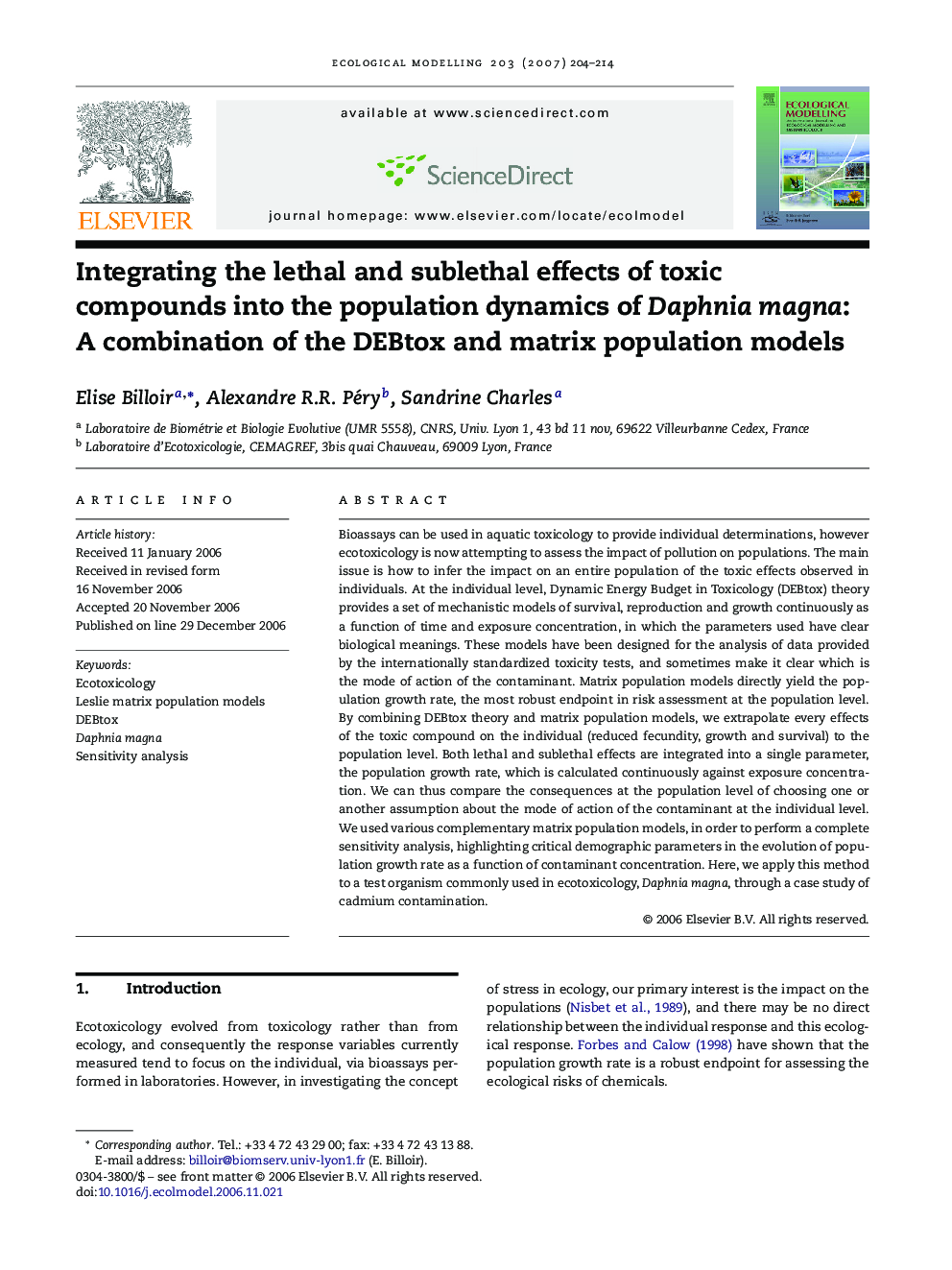| Article ID | Journal | Published Year | Pages | File Type |
|---|---|---|---|---|
| 4378545 | Ecological Modelling | 2007 | 11 Pages |
Bioassays can be used in aquatic toxicology to provide individual determinations, however ecotoxicology is now attempting to assess the impact of pollution on populations. The main issue is how to infer the impact on an entire population of the toxic effects observed in individuals. At the individual level, Dynamic Energy Budget in Toxicology (DEBtox) theory provides a set of mechanistic models of survival, reproduction and growth continuously as a function of time and exposure concentration, in which the parameters used have clear biological meanings. These models have been designed for the analysis of data provided by the internationally standardized toxicity tests, and sometimes make it clear which is the mode of action of the contaminant. Matrix population models directly yield the population growth rate, the most robust endpoint in risk assessment at the population level. By combining DEBtox theory and matrix population models, we extrapolate every effects of the toxic compound on the individual (reduced fecundity, growth and survival) to the population level. Both lethal and sublethal effects are integrated into a single parameter, the population growth rate, which is calculated continuously against exposure concentration. We can thus compare the consequences at the population level of choosing one or another assumption about the mode of action of the contaminant at the individual level. We used various complementary matrix population models, in order to perform a complete sensitivity analysis, highlighting critical demographic parameters in the evolution of population growth rate as a function of contaminant concentration. Here, we apply this method to a test organism commonly used in ecotoxicology, Daphnia magna, through a case study of cadmium contamination.
